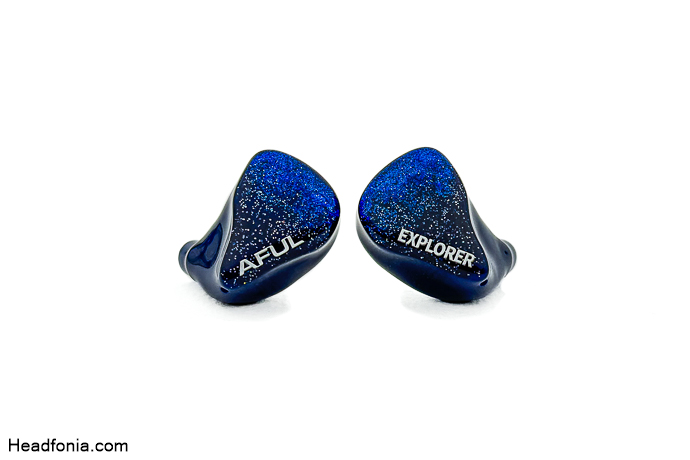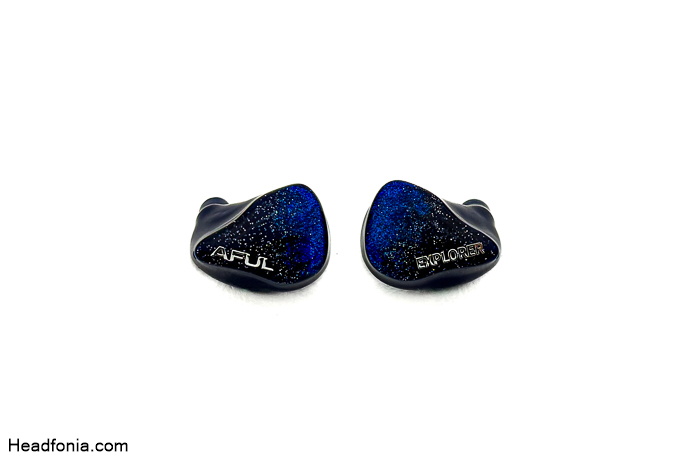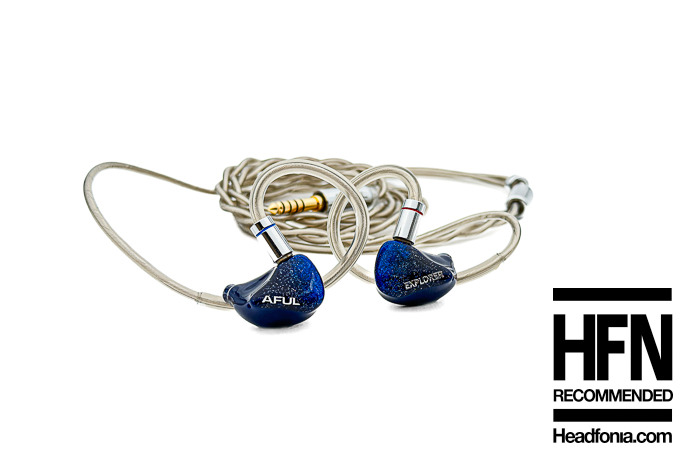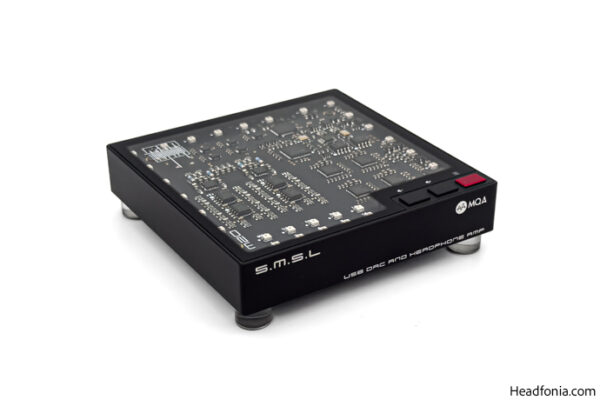If Google is showing you this page directly, click here to go to the start of the article.
AFUL Explorer – Sound Impressions
The AFUL Explorer’s tuning can be labeled as ”Mellow Harman”. It is characterized by a relaxing presentation that is subbass-prominent with slightly thicker than neutral midrange and a smooth treble.
The Explorer requires a bit of volume to truly shine, as the upper midrange and lower treble are slightly less energetic than in the usual Harman tuning. The Explorer’s sound becomes more immersive at higher volumes (around 90dB for me vs. my usual 80dB), and you can hear more details without distortion or driver flex. It’s unique tuning done right, and it is impressive, especially with its current price tag. It sounds like a baby Mega5EST but without the EST action and the upper treble extension.
Before going into detail, I’d like you to know that I used the iBasso D16 as the source and the DX180 as the digital transport for this write-up, along with several dongles, including the Kensei, Onix Alpha, and the iBasso DC07Pro.
Lows
The bass is elevated towards the sub-bass frequencies, resulting in an impactful presentation with a good amount of rumble. The mid-bass is slightly elevated yet still stands behind the subs, following from a step back. This cleans up the otherwise linear midrange, making instrument timbre slightly thicker but not too much. The rest of the lows feel vibrant and balanced with a little warm sauce sprinkled all around. I don’t like mid-bass elevation because it is very hard to fine-tune the amount, and it makes finding good synergy with sources very difficult. Aful’s approach totally works, and it’s my pleasure to say that this tuning worked well with every source I mentioned above.

Mids
The midrange is slightly warmer and thicker than the usual Harman-tuned chi-fi IEMs, which, IMO, is a welcome change when done right. The midrange feels coherent and liquid, with strings and woodwinds having good body and great timbre. Explorer’s signature is smooth due to the upper mids, and the lower treble is tuned in an inoffensive way, albeit slightly recessed, eliminating any shoutiness. This conservatively tuned ear gain region gives the signature its musicality along with the sub-bass extension, although it might lack the energy some audiophiles love. Increasing the volume helps here as the Explorer scales well with volume, showcasing better detail retrieval.
I also recommend pairing it with neutral-sounding sources, such as Cirrus Logic-equipped DACs or DAPs to achieve even better balance. I found the warmth amount pretty much perfect, to be honest. It is not excessively warm or thick and nowhere near shouty. Overall, the upper midrange is smooth and free from any aggressive or peaky elements. Of course, the trade-off is the energy and resolution boost coming from the ear gain region, but with the right pairing, you get a uniquely smooth and satisfactory tuning that just works with a wide range of genres and never tires the listener.
Highs
The treble overall is tuned smoothly, but the energy in mid-treble (4 to 10kHz-ish) is great. You get an adequate amount of detail and extension here. The overall presentation also gets a positive clarity boost from here, effectively adding energy to the mix. I find the overall sound signature very versatile, and it’s easy to like thanks to its fairly detailed signature despite having tuned smoothly in the upper midrange. Regarding overall resolution, the sub-bass quality and the relatively linear midrange help with the tuning decision Aful has taken. I found myself returning to it in the rotation more than I presumed, and especially for a hundred bucks, it’s a unique IEM that you should add to the collection.
My only gripe with the treble section is, just like many IEMs in this price bracket, there’s little to no upper treble extension. If you are over 50 or you take my advice to listen louder, you won’t have to worry about that. Just kidding!

Technical Performance
The Explorer’s technical performance is good for its price point. The hundred bucks price bracket is wildly competitive, and there are many rivals, yet Explorer manages to set itself apart from the rest due to its unique tuning. The sub-bass quality, linear midrange, and energetic mid-treble successfully compensate for the recessed lower treble. I have no complaints about the PRaT either; it feels reasonably fast for a DD. The soundstage is above average, with excellent imaging and good separation. It has the unique skill of creating a sense of musicality and coherency, enveloping you and letting you enjoy the music without any distractions. That’s why I loved this tuning more than I thought I would.
Comparisons
vs. AFUL Performer 8 ($369 USD)
I sadly don’t have the Performer 5, so I’ll compare the Explorer with the Performer 8. Compared to the Performer 8 IEMs, the Explorer’s bass is more impactful and slightly more extended.
Bass quality is slightly better on the Performer 8, but they are close. The Performer 8 feels more V-shaped, with a more energetic upper midrange / lower treble region, and leans towards a brighter sound signature compared to the Explorer. Its detail retrieval is slightly more impressive but lacks the Explorer’s smooth sauce.
Performer 8’s soundstage feels wider and deeper, with more distinct stereo separation. Explorer is ideal for those who prefer a more relaxed and smoother sound, while the Performer 8 is more dynamic, detailed, and feels faster PRaT-wise, ideal for those who want more treble energy.
vs. Celest Relentless ($169 USD)
The Explorer features a “Mellow Harman” tuning with a relaxing and smooth presentation. On the other hand, the Relentless has a V-shaped sound, providing an engaging, dynamic, and fun presentation.
The Celest Relentless emphasizes mid-bass and upper bass, resulting in a more mid-bass-focused signature with a brighter ear gain/upper mid/lower treble region. Relentless’ midrange is more recessed and less impressive regarding midrange resolution and clarity. It has a more V-shaped signature. Explorer’s better-controlled mid-bass that keeps the midrange clean. The mid-bass of the Relentless can sometimes cloud the lower midrange, affecting clarity.
At high volumes, the Celest Relentless can sound too aggressive in the lower treble, whereas the AFUL Explorer remains smooth and enjoyable. Overall, the Explorer feels more balanced and ”hi-fi” to my ears, and probably due to the overall coherence, it also feels more resolving, especially with a proper dongle like the DC07Pro.

In a nutshell, the Explorer is ideal for those seeking a relaxing, smooth, yet fairly detailed sound, while the Celest Relentless, with its V-shaped tuning, offers engaging, fun, and more dynamic listening.
Last Words
AFUL Explorer IEMs offer a mellow Harman-tuned sound signature with a tasty sub-bass boost, offering a smooth and non-fatiguing signature at an excellent price. The Explorer’s presentation is immersive, liquid, tastefully warm, and smooth. The combination of Aful’s patented technologies and meticulous acoustic design has resulted in a well-rounded product that downright impresses. It’s easy for me to recommend it to our readers who are looking for a solid budget IEM that they can enjoy for hours end.

Summary
Pros:
- Unique tuning done right
- Great price-to-performance ratio
- Compact shell
- Well-built
Cons:
- No interchangeable plugs
Page 1: AFUL, Explorer IEMs, Packaging & Accessories, Build, Design & Fit
Page 2: Sound Impressions, Low, Mid, High, Technical Capability, Comparison, Last Words









